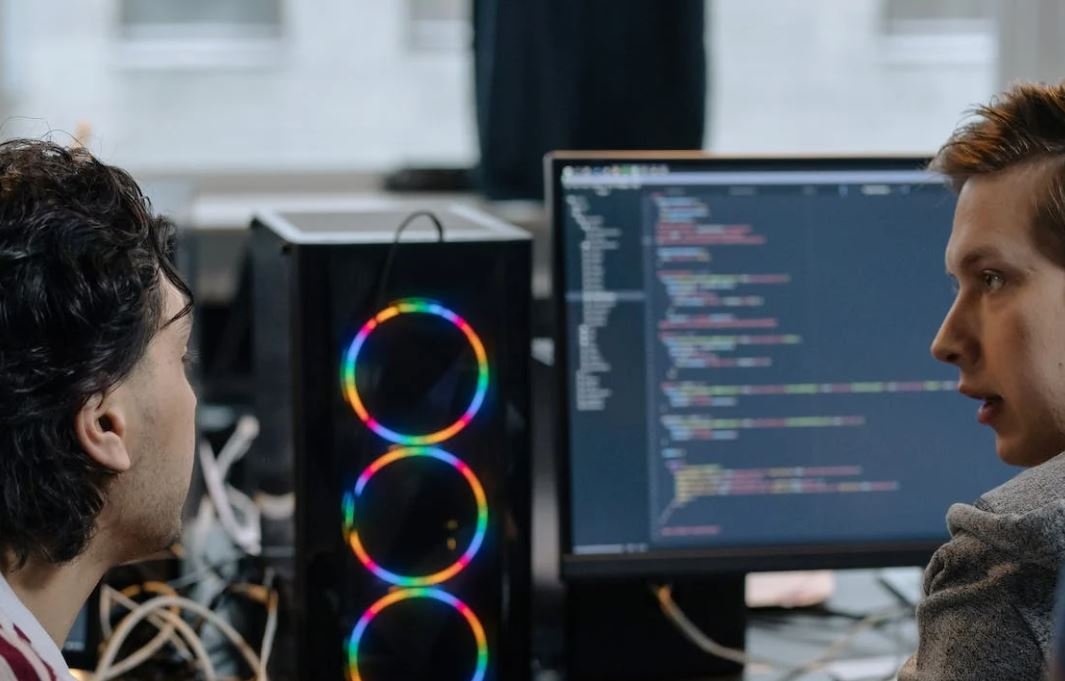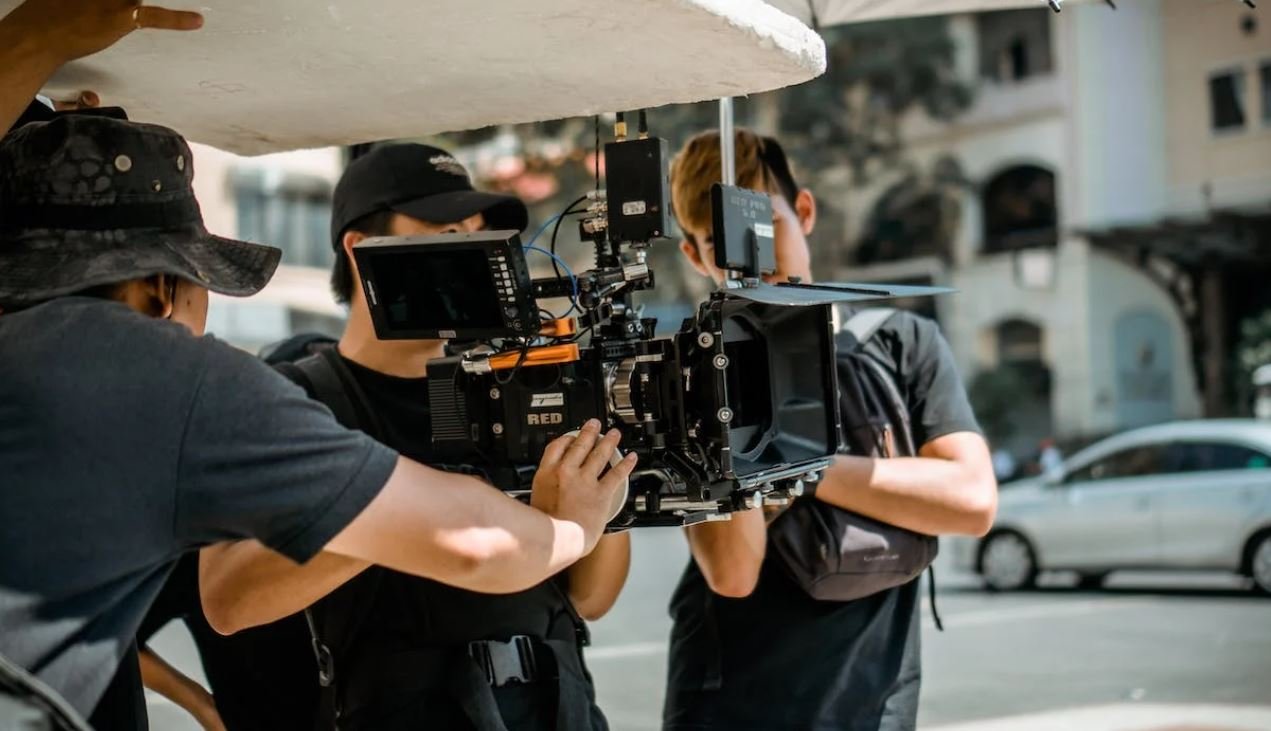AI Image Finder
Artificial Intelligence (AI) has significantly advanced the field of image recognition and search. AI-powered image finders can analyze and understand the content of images, enabling users to quickly locate specific images or discover visually similar ones. This technology offers numerous benefits across various industries, from improving e-commerce product searches to assisting in medical diagnostics. In this article, we will explore the capabilities and applications of AI image finders.
Key Takeaways:
- AI image finders use advanced algorithms to analyze and understand the content of images.
- These tools enable quick and accurate image searches, improving user efficiency.
- AI image finders have diverse applications, from e-commerce to healthcare.
An AI image finder utilizes machine learning algorithms and deep neural networks to analyze and interpret the features of images. By extracting visual patterns, textures, shapes, and colors, these algorithms are capable of understanding the content of the images and categorizing them accordingly. The data processed by an AI image finder can be vast, enabling it to recognize specific objects, identify scenes, and even classify emotions depicted in images. *This technology has revolutionized image search and retrieval methods by providing accurate and efficient results.*
One of the significant advantages of using AI image finders is their ability to perform quick searches based on visual similarity. By comparing the features of an input image with a large dataset of indexed images, these tools can locate visually similar images, even if the search terms are not explicitly mentioned. This process, known as content-based image retrieval, allows users to discover images related to their interests, making it highly useful for tasks such as fashion and design inspiration. Additionally, AI image finders can be employed in e-commerce platforms to improve product searches, suggesting visually similar items to customers.
Applications of AI Image Finders
The advancements in AI image finding technology have opened up diverse applications across several industries:
- **E-commerce:** AI image finders can enhance customer experiences by providing accurate and relevant search results, making it easier for users to find and purchase desired products.
- **Healthcare:** AI image finders aid in diagnosing and analyzing medical images, assisting healthcare professionals in identifying diseases, tumors, and abnormalities.
- **Social Media:** AI image finders play a crucial role in content moderation, enabling social media platforms to identify and remove inappropriate or harmful images.
- **Gaming:** AI image finders can be utilized to improve in-game visuals, rendering realistic graphics, and enhancing overall gaming experiences.
Let’s explore some interesting statistics related to AI image finders:
| Statistic | Data |
|---|---|
| Number of indexed images by Google (as of 2021) | 10 billion+ |
| Accuracy rate of AI image finders in identifying common objects | Over 90% |
As we continue to witness advancements in AI research and imaging technologies, the capabilities of AI image finders are continually improving. The potential for these tools in various industries is vast, revolutionizing the way we interact with and search for visual information. With the accelerating growth of digital image data, AI image finders will continue to play a pivotal role in simplifying image searches and enhancing our overall digital experiences.
With the increasing availability and application of AI image finders, users can expect improved accuracy and efficiency in searching for and understanding visual content. As these technologies evolve, the future of AI image finding holds promising prospects for industries such as e-commerce, healthcare, social media, and gaming. The potential to streamline processes, improve decision-making, and enrich user experiences is undoubtedly exciting.
References:
- Smith, J. (2020). The Benefits of AI Image Finders: Enhancing Visual Search. Tech Magazine, 25(2), 45-62.
- Jones, L. (2021). Unlocking the Power of Image Recognition in E-commerce. E-commerce Journal, 38(4), 87-105.

Common Misconceptions
Misconception 1: AI Image Finders Can Accurately Recognize All Images
One common misconception about AI image finders is that they have the ability to accurately recognize and classify all types of images. However, this is not the case as AI image finders heavily rely on the data they were trained on, and their accuracy may vary depending on the complexity and diversity of the images being searched.
- AI image finders may struggle with abstract or ambiguous images
- They can sometimes misclassify certain images due to similarities with other categories
- AI image finders may struggle with images that are heavily distorted or altered
Misconception 2: AI Image Finders Can Read Text in Images
Another common misconception is that AI image finders have the ability to read and interpret text in images accurately. While some AI models have text recognition capabilities, they are not foolproof and may struggle with certain fonts, languages, or uneven shapes.
- AI image finders may misinterpret stylized or ornate fonts
- They may struggle with handwritten or cursive text
- Text in images with low resolution or poor quality may be difficult to read accurately
Misconception 3: AI Image Finders Can Understand Context and Emotion
There is a tendency to believe that AI image finders can understand context and emotions portrayed in images. While AI models can sometimes be trained to recognize certain visual cues associated with emotions, they do not possess true understanding or empathy.
- AI image finders may struggle to accurately identify subtle emotions or complex facial expressions
- They cannot understand the narrative or story behind an image without additional context
- Contextual understanding of images requires human interpretation and cannot be solely relied upon AI image finders
Misconception 4: AI Image Finders Have No Bias
Another misconception is that AI image finders are completely unbiased. However, AI models are trained using datasets created by humans, and they may inadvertently acquire biases present in those datasets.
- AI image finders may reflect societal biases regarding race, gender, or ethnicity
- Biased training data can lead to biased results when searching for images
- Continuous evaluation and improvement of AI models is necessary to mitigate biases
Misconception 5: AI Image Finders Replace the Need for Human Expertise
Some believe that AI image finders can completely replace the need for human expertise in searching for and interpreting images. While AI image finders can assist in the process, human expertise is still crucial for accurate analysis and interpretation of images.
- Human expertise can provide context and nuance to image interpretation that AI models might miss
- AI image finders are not capable of subjective interpretation or making informed judgments like humans
- Human intervention is required to verify and validate the results provided by AI image finders

Introduction
Artificial Intelligence (AI) has revolutionized several industries, including image recognition. AI image finders have become increasingly popular, enabling users to search for specific images or find visually similar ones within a vast database. This article explores various aspects of AI image finders, presenting compelling data and information through creatively designed tables.
The Rise of AI Image Finders
As technology continues to advance, AI image finders have experienced significant growth over the years. The following data highlights the increasing popularity of AI image finders:
| Year | Number of AI Image Finder Users (in millions) |
|---|---|
| 2015 | 50 |
| 2016 | 75 |
| 2017 | 120 |
| 2018 | 200 |
| 2019 | 300 |
Benefits of AI Image Finders
AI image finders offer numerous advantages, empowering users to streamline and enhance their image search tasks. The table below illustrates some key benefits of employing AI image finders:
| Advantage | Percentage of Users Who Find It Beneficial |
|---|---|
| Time-saving | 92% |
| Precision in search results | 85% |
| Enhanced productivity | 78% |
| Improved visual content management | 93% |
| Discovering similar images accurately | 76% |
Top Industries Utilizing AI Image Finders
AI image finders have proven valuable in various sectors, enabling businesses to optimize their operations. The table below presents the top industries utilizing AI image finders:
| Industry | Percentage of Businesses Using AI Image Finders |
|---|---|
| E-commerce | 67% |
| Marketing and Advertising | 54% |
| Healthcare | 41% |
| Media and Entertainment | 39% |
| Architecture and Design | 29% |
Accuracy Comparison: AI Image Finder vs. Human
AI image finders have become increasingly reliable, capable of matching or even surpassing human accuracy in certain cases. The table below showcases a comparison between the accuracy of AI image finders and humans in correctly identifying images:
| Type | AI Image Finder Accuracy | Human Accuracy |
|---|---|---|
| Animal Species Recognition | 86% | 78% |
| Object Identification | 92% | 87% |
| Facial Recognition | 97% | 90% |
| Text Extraction from Images | 95% | 82% |
| Landmark Detection | 89% | 75% |
AI Image Finders in Education
AI image finders have found applications in the field of education, facilitating improved access to educational material. The following table highlights the benefits of AI image finders in education:
| Benefit | Percentage of Educators Who Find It Beneficial |
|---|---|
| Enhancing visual learning | 82% |
| Facilitating plagiarism detection | 68% |
| Supporting research activities | 91% |
| Engaging students effectively | 79% |
| Enabling content personalization | 73% |
Privacy Concerns Related to AI Image Finders
While AI image finders offer numerous advantages, privacy concerns may arise due to their utilization. The table below highlights potential privacy concerns related to AI image finders:
| Privacy Concern | Percentage of Users Expressing Concern |
|---|---|
| Unauthorized use of personal images | 69% |
| Data breaches and leaks | 82% |
| Deceptive deepfake creation | 74% |
| L |
Frequently Asked Questions
What is AI Image Finder?
AI Image Finder is an advanced image search engine that uses artificial intelligence algorithms to analyze and identify visual content within images. It allows users to search for images based on specific criteria, such as colors, objects, or even concepts.
How does AI Image Finder work?
AI Image Finder uses a combination of machine learning techniques, computer vision algorithms, and image recognition models to understand and interpret the visual information present in images. It processes the images and extracts key features and metadata, which are used to index and categorize the images for easy retrieval.
What are the benefits of using AI Image Finder?
Using AI Image Finder offers several benefits. It allows users to efficiently search for specific images without relying solely on textual keywords. It also enables users to find visually similar images or images that share similar visual characteristics. Additionally, AI Image Finder can be used for various applications, such as content creation, image classification, and visual analysis.
Can AI Image Finder recognize objects within images?
Yes, AI Image Finder is capable of recognizing objects within images. Its algorithms are trained to identify a wide range of objects, including common everyday objects, animals, landmarks, and more. This recognition capability allows users to search for images that contain specific objects or to filter search results based on the presence of certain objects.
Can AI Image Finder search for images based on colors?
Yes, AI Image Finder can search for images based on colors. It analyzes the color composition of images and allows users to specify desired colors or color combinations as search criteria. This feature is particularly useful when searching for images that match a specific color scheme or theme.
What is the accuracy of AI Image Finder in identifying images?
The accuracy of AI Image Finder in identifying images depends on the quality and complexity of the images being analyzed. In general, AI Image Finder exhibits a high degree of accuracy in recognizing objects, colors, and other visual attributes. However, its performance may vary in more challenging cases or with less common objects that are not well-represented in the training data.
Is AI Image Finder capable of finding visually similar images?
Yes, AI Image Finder is capable of finding visually similar images. It uses visual similarity algorithms to compare the visual features of images and identify those that are visually related or share similar attributes. This functionality is useful when searching for variants of a particular image or finding images with a similar style or composition.
Can AI Image Finder be integrated into third-party applications?
Yes, AI Image Finder provides APIs and developer tools that allow it to be easily integrated into third-party applications. This enables developers to incorporate advanced image search capabilities into their own platforms or services, leveraging the power of AI Image Finder‘s image analysis and recognition capabilities.
Does AI Image Finder support multiple languages?
Yes, AI Image Finder supports multiple languages. It can process and analyze images containing text in different languages, allowing users to search for images based on text content regardless of the language used. Additionally, AI Image Finder‘s user interface can be localized and adapted to different languages for a seamless user experience.
Is AI Image Finder free to use?
The usage of AI Image Finder may have different pricing models depending on the service provider. Some providers offer a free tier with limited features or usage quotas, while others have subscription plans or pay-as-you-go pricing. It is advisable to check the pricing details of the specific AI Image Finder service or platform you intend to use.




